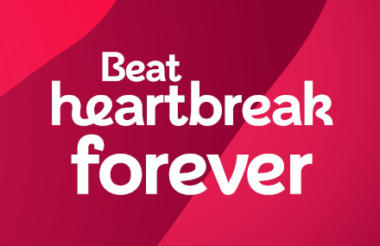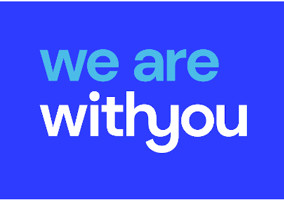With research showing that stronger brands recovered to nine times faster than other brands during previous recessions, many charities will be using this time to re-evaluate their brand purpose and marketing strategies.
While the British Heart Foundation (BHF) is a well-trusted and loved charity brand, three years' ago we knew that there were misperceptions about our purpose, which were limiting our growth.
To help change the way people think and feel about the BHF we embarked on a strategic brand review. A new proposition to Beat Heartbreak Forever saw us completely overhaul the brand with a new marcomms strategy and a fresh, contemporary brand identity.
Our launch campaign had a crystal-clear message that while ‘our research starts with your heart, it doesn't stop there’. Our efforts have seen our brand metrics reach their highest level since recording began, which puts us in a stronger position to weather the challenges ahead.
Thinking about undertaking your own strategic brand review?
If you've not done one before, I want to let you know that while the next few weeks, months, or even years may be fraught with challenges, nothing comes close to the feeling of seeing everything come together and your charity grow. While this wasn't my first brand review, it was my biggest. Here are my recommendations to help you get off to the best start:
Are you asking the right questions?
If you are asking the wrong questions, you'll end up with the wrong answers. Einstein was famously quoted as saying that if he had an hour to solve a problem, he would spend 55 minutes thinking about the problem and 5 minutes thinking about solutions. It is of the utmost importance that you lay all the appropriate groundwork before you begin. Asking 'why' five times is a popular interrogation technique that helps you to understand underlying issues.
Fine-tune your brief
Your brief is arguably the most important part of your project. Most briefs are surprisingly prescriptive and leave little room for creativity or innovation. Once you've finished your brief, ask your colleagues to review it and ask for their honest feedback.
Think carefully about the language that you use
While it is always best to avoid using marketing jargon and acronyms when speaking to people who work in other areas of the organisation, I'd also recommend avoiding using the word 'brand' or 'branding.' You may feel that this seems counterintuitive but bear with me. There is a strong chance that you'll be liaising with colleagues who have a limited understanding of what you mean by brand, and if someone believes that you simply want to change the logo, you're not off to the best start. Instead of saying ‘brand’, we found it more effective to say 'the BHF'.
Engage key stakeholders as early as possible
Be clear about what you want to achieve, listen to stakeholder feedback, and agree on what level of involvement they need to have during the project. Without their support, it will be difficult to implement any changes further down the line. Ask them to review and approve the brief before you send it to agencies.
Work with an agency
I strongly recommend working with an agency, their insight and expertise is invaluable. If you are a small charity with a limited budget it is still worth reaching out to agencies as many will often work projects that they care about for a reduced rate.
We worked with Wolff Olins on our strategic brand review. We met some great agencies when we were deciding who to work with but felt that Wolff Olins truly understood what we were trying to do and their ambition matched ours. You'll be spending a lot of time with your agency, so the chemistry must be right.
Be clear on the scope and deliverables of the work
It is natural for a project to evolve, but make sure to keep track of a detailed project plan and agreed deliverables and amend if necessary, this will help to mitigate any potential problems.
Make meetings matter
It may sound obvious, but when you’re spinning multiple plates it is easy to overlook basics like meeting admin. Ensuring that every meeting has a clear agenda and keeping a record of actions will help to keep things running smoothly.
Delve deep into data
Another seemingly obvious point, but one that is worth stressing. During this process, data will be your best friend. You want a mix of primary, secondary, qualitative, and quantitative data. Some of this will be collated formally through surveys and focus groups, while other times, you'll be asking your friends if your new font looks friendly or frantic. Our 'Eureka' moment came from desk research – Wolff Olins questioned why we weren't openly talking about the full breadth of research that we funded and suggested that we did!
Test, refine and test again
Continue to push yourself, test as much as possible, refine, and then test again. Early iterations of work are a time where you can experiment. If you feel like you're headed down the wrong path, take a step back and start again. Be honest with your agency about what is and isn't working. Much like a normal relationship, in an agency/client relationship, honesty builds trust.
Bring your ideas to life
When you have finished the strategic brand review, you’ll normally have a set of recommendations of things that the brand needs to change and these recommendations will need to be reviewed and approved by your board of trustees and your executive group.
When you're trying to sell your recommendations and vision to these stakeholders, mood boards will only get you so far. Consider bringing your vision to life with a film or a storybook. We strongly believe that the unanimous backing that we received when we shared our new brand proposition was largely due to the film that we made using old BHF footage alongside stock footage.
Ask for a helping hand
When our new proposition was approved by the BHF's board of trustees and executive group, we knew that our small team wouldn't be able to do everything that we needed in the proposed timescales, so we recruited additional resource to help us. We recruited a brilliant change programme manager to help us identify what we needed to do ahead of the launch. Together, we identified several different cross-organisation workstreams, appointed managers for each, and helped keep track of them all, so we knew where we were at all times. Once you’ve identified key milestones in each project, use programme and project management principles to ensure the programme runs smoothly.
Create and collaborate
In addition to engaging key stakeholders as early as possible, once you have the go-ahead, you'll need to work with several different teams to realise shared ambitions. For example, at the BHF we were changing how we spoke about our research, so we needed to work closely with our Medical Directors to agree appropriate new messaging for marketing and communications.
Build a toolkit
Take time to understand what the organisation needs to help them bring your new brand promise to life - brand guidelines, show and tells, messaging guides, PowerPoint templates etc.
Inspire and empower
Staff and volunteers are your strongest brand advocates. Our research showed that staff at the BHF didn't feel confident talking about what the BHF does, so we developed training to overcome this challenge, which resulted in a fivefold increase in confidence in talking about the BHF.
Don't overlook internal communications
Many people are naturally averse to change, so you need to take time to explain the need for change as well as your vision. If there are concerns, identify where these are coming from and take time to understand frustrations and help to remedy them. There are a number of change management models that can help you do this.
Finally – celebrate!
When you are finally ready, celebrate everything that you've all achieved. Don't forget to tell everyone about how well the new brand is performing when you finally have time to breathe.
Kim Ferguson is a brand manager at the BHF and runs The Brand Blog
Related articles












